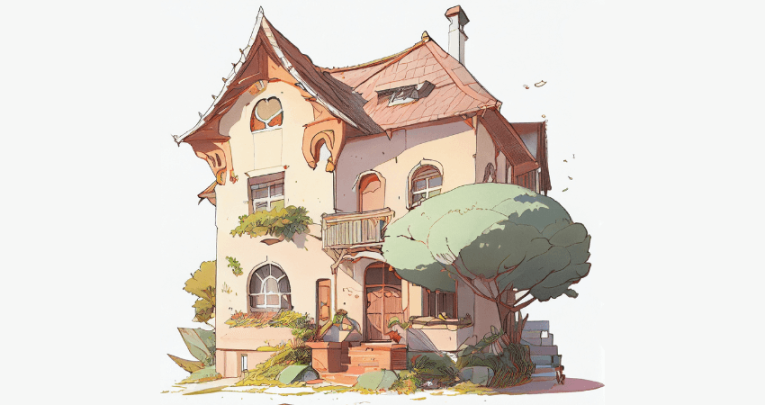Creative writing pictures – Using images in English lessons

A well-chosen image can be an invaluable teaching tool…

- by Caroline Scott
- EAL author, educator and founder of Across Cultures Visit website

Using creative writing pictures in English lessons can support vocabulary development, foster inference and critical thinking. It can also support the generation of ideas, among other valuable benefits.
How, though, can we as educators select a great supporting image that results in learners experiencing these kinds of benefits?
Focusing in
Often, we can get bamboozled by the content of a topic. We’re trying to inspire our imaginative learners to create an incredible piece of work. For this reason we put lots of thought into how to enthuse them to write about a topic.
The challenge that then occurs, time and time again, is how to maintain that excitement and sustain the momentum of pupils’ written output.
Let’s say the purpose of the image is to be a focal point for writing a non-chronological report about a particular topic. As a teacher, you’re unlikely to provide a blank sheet of paper and ask the children to write something, completely unprompted. (Unless you are, for example, trying to obtain an unaided writing sample for assessment purposes.)
What you will most likely do, is think about how you can use an introduction (and in this case, an image) to connect the learning with prior experience. You want to scaffold not only the content that the child is about to write, but the literacy requirements they will need to produce a successful report.
Scaffolding
Hammond and Gibbons (2005) explain scaffolding as follows:
“…teachers need to provide temporary supporting structures to assist learners to develop new understandings, new concepts, and new abilities. As the learner acquires these skills, so teachers need to withdraw that support, only to provide further support for extended or new tasks, understandings and concepts.”
When we scaffold learning we consider the building blocks needed for learners to reach their next steps; thus, every image we select to support learning needs to provide this kind of support. Image is one of many ways to scaffold learning. Using images as a foundation for scaffolding provides a powerful structure within which learners can produce their final piece of writing.
Image is central to my work as an educator and author. I’ve developed an effective scaffold for using images to support the development of speaking, listening, reading and writing.
I’ve seen first-hand the positive impact it can have, and how beneficial it can be within the right setting. I’ve observed learners make a reading age improvement of 14 months over a six-month period.
So let’s consider how you might select an image and use this as a scaffold for moving learning from speaking and listening into reading and writing.
Choosing creative writing pictures
Try to pick a single image that really encompasses the topic the children will be writing about. Remember to consider a range of sources. These could range from video stills and screenshots to posters or postcards. You might even choose a graph or a collection of infographics.
Think carefully about what aspect of the creative writing pictures you will ask the children to focus on. What prompt should it give them?
You could, for example, select just one part of the image and present it as a mystery to be solved. Or you could display creative writing pictures that show only half a story. Ask the children to think about and write down what might happen next. Pictures of favourite characters can also be great starting points.
Presenting creative writing pictures
Consider beginning with a plenary activity. Display your chosen image and ask the children to consider certain questions that you will raise about it in the later lesson. In this way they will have the opportunity to think about the image ahead of time.
Pre-learning can be used as a stepping stone for children who find literacy challenging. It’s ideal for low-level literacy learners and those who have English as an additional language, as well as SEND students.
Speaking and listening
If possible, give each child a copy of the image to use during the lesson; tell them it’s their own special source of inspiration.
Ask the children about the image. Your questions should be crafted carefully, to inspire them to engage in discussion about what they can see. The point here is to start getting them thinking about not just the image, but the vocabulary around it.
Moving to reading
Consider a shared read of a model answer that is based on the image. You can also use videos or real objects related to your chosen image to stimulate even more discussion and, potentially, new vocabulary.
If we want learners to write something incredible, we need to provoke debate around the topic. We also need to offer great reading text models to scaffold next steps.
Make sure that when modelling a text you offer children the opportunity to rehearse reading it. You can also encourage them to change parts of it with reference to the image. This is so that they can make it ‘their own’, whilst keeping within the structure of the original model.
Moving to writing
The final step in this process is for learners to take the image and model for reference, and rehearse their own texts ahead of writing.
This should keep them focused on the topic (inspired by the image) while maintaining a structure. Writing is creative, and this is the children’s time to shine, following lots of modelling.
The power of images in teaching reading and writing cannot be overstated. Opportunities to use images as a focus for speaking, listening, reading and writing are limitless.
However, finding the right image with the right structure of support around it can make all the difference to a learner’s inspiration, motivation, output and ultimately, success.
Caroline Scott is and EAL author and educator. She is the founder of Across Cultures and creator of the Learning Village programme. Caroline delivers training on EAL in schools in the UK and overseas. Browse more creative writing prompts.







